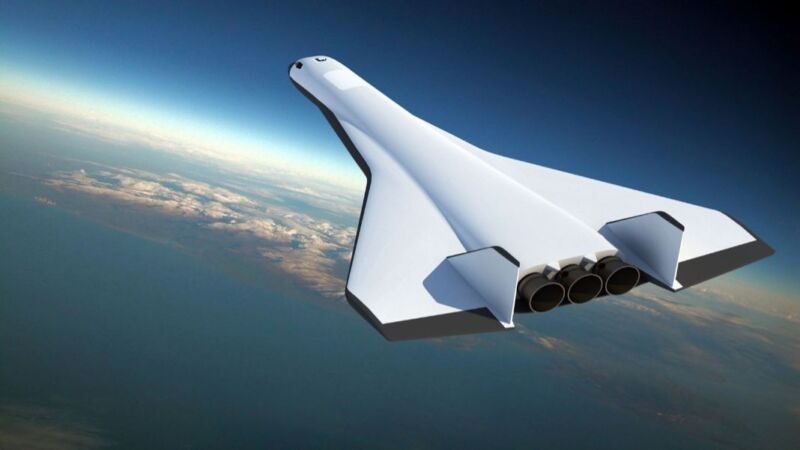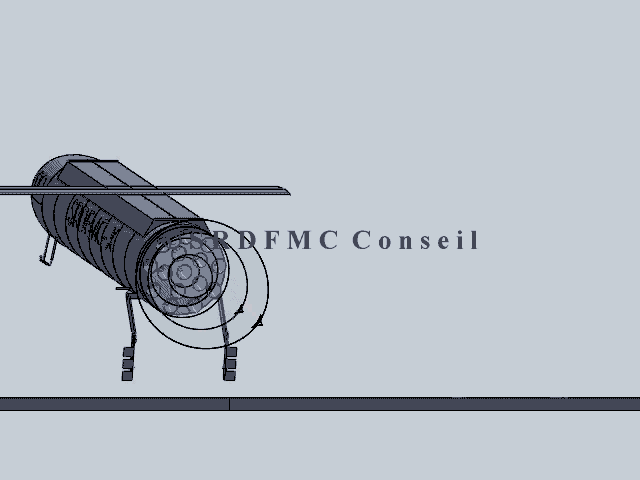From all this, there are a host of interesting points about air-launch to orbit.
-Optimal altitude: 50 000 ft, no need to go higher.
-Optimal AoA: 30 degrees
-Optimal speed for the mothership
a) Mach 0.85 removes 1100 m/s out of Earth ascent 9400 m/s
b) Mach 2 removes 1600 m/s out of Earth ascent 9400 m/s
c) Mach 3 removes 2000 m/s out of Earth ascent 9400 m/s
d) but if you want to remove 3000 m/s, then it is Mach 5.5: in the depth of the heat barrier and hypersonic
- Something else: 9400 m/s is for hydrolox. Anything denser can go lower: as low as 9038 m/s for RP-1 / H2O2
- Equator vs KSC vs Baikonur: 58 m/s penalty for KSC, 142 m/s for Baikonur
- the ISS orbits Earth at 7800 m/s but ascending to it takes +1500 m/s of steering / gravity / drag losses
- yet a 747 right over the equator dropping a keroxide booster or rocketplane at 50 000 ft, Mach 0.85 and (if that's even possible) 30 degree AoA can
- exactly cancel all the ascent losses
- and get ascent to orbit matching orbital velocity, both at 7800 m/s
And from Mach 2 onwards, the part of ascent to orbit done on rocket engines (the voracious ones that need tons of bottled, liquid oxidizer) goes below orbital velocity values: 7300 m/s for a Mach 2 mothership; 6900 m/s for a Mach 3 one.
As for Skylon, by starting the rocket at Mach 5.5, it saves the said rocket 3000 m/s out of 9400 m/s: it has to perform "only" 6400 m/s and this led to massive amounts of LOX dead weight being saved.
Even then, Skylon fuel fraction is 0.84 - still better than hydrolox SSTO (0.88) or non-hydrolox SSTO (0.93 for a SSTO with Raptor & 380 seconds; 0.94 to 0.96 for anything with a lower isp: from 360 to 310).
Hence, if Radian SSTO don't want to use hydrolox for a SSTO rocketplane, it is "fuel fraction 0.95 or bust" - and this, with minuscule payload. Screw the fuel fraction to 0.93 and boom, Radian delta-v goes below 9000 m/s - and you end suborbital very, very quickly.
The rocket equation is a... female dog.
Now let's shift to different planetary bodies.
Mars surface to orbit: 4200 m/s
Moon surface to orbit: 2400 m/s
Moon surface to escape: 2700 m/s
For the sake of comparison
Earth surface to Earth escape velocity: 11200 m/s.
"We are living on the wrong planet for SSTO. Mars ? no problem !" Elon Musk, 2018.
He was spot on.
I once calculated fuel fractions for chemical SSTOs. With the all time chemical rocket isp record of 542 seconds (lithium, oops, fluorine, gasp, LH2, the horror) fuel fraction would not go below 0.83. Even nuclear would go no lower than 0.75. Hydrolox needs 0.88 as a bare minimum.
For the sake of comparison
- B-52H fuel fraction: 0.64
- Rutan's Voyager, 1986: 0.74
- Rutan's Global Flyer, 2007: 0.82
- Titan II first stage booster all time rocket record: 0.962 - could go SSTO but with zero payload and not reusable. Even with Russian staged combustion engines, specific impulse 330 - 360, fuel fraction would still need to stick to 0.94.
- A coke can is 0.95 mass fraction: 95% coca cola in weight, 5% of tin can around the coke.
- the B-58 Hustler still has the all time record for the lightest undercarriage, reported to its MTOW: 2.5%. Most of the time it is 4% of MTOW.
At the end of the day, a good case could be make that Earth size, mass, and density and thick atmopshere by requesting 7800 m/s to 9400 m/s just brings chemical rocket SSTOs on their knees: dragging them to next to impossible fuel fractions.
Chemical rocket SSTO with 0.80 fuel fraction result in a delta-v of 5000 - 7000 m/s (depends if LH2 or not).
So to hit Earth orbit, fuel fraction has to hit impossible numbers: 0.88 or 0.95.
Now Mars is proof that on a smaller body, you can get into orbit for merely 4200 m/s.
Often wondering how much it would take to go into orbit around Venus rocky body (forget the hellish atmosphere).
Being 10% smaller and 25% less dense than Earth, I bet you orbital velocity there must be 7000 m/s: just a bit less than Earth - and just enough to make chemical rocket SSTO barely feasible there.
Bottom line: we need a planet a bit more massive than Mars but a bit less than Venus and Earth. A planet with an orbital velocity of 6500 m/s.










